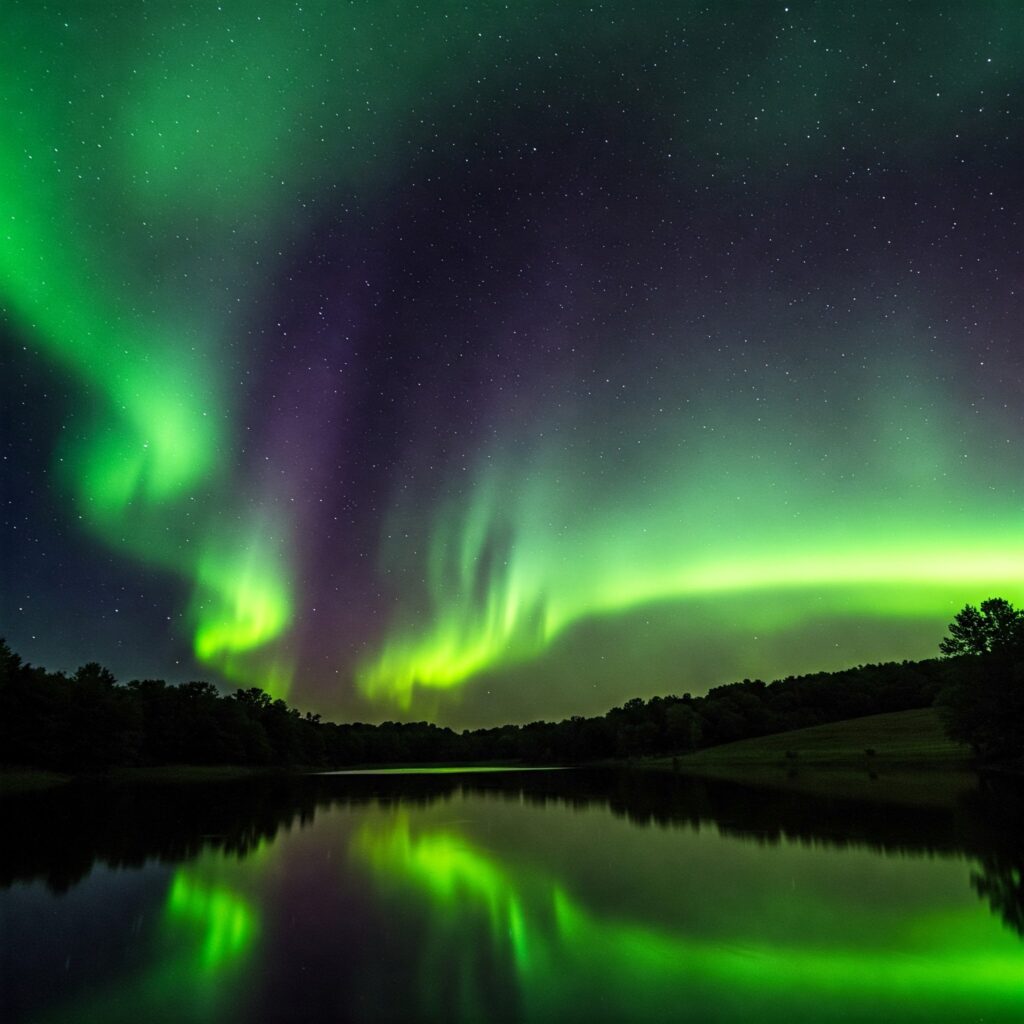The Arkansas Aurora Borealis, or Northern Lights, is a mesmerizing natural phenomenon typically associated with polar regions. However, in 2025, Arkansas residents have a unique opportunity to witness this celestial display due to increased solar activity. This guide provides insights into the current trends, expert perspectives, challenges, and practical tips for experiencing the aurora borealis in Arkansas.
Understanding the 2025 Aurora Borealis Trends
Increased Solar Activity and Its Impact
The sun operates on an 11-year solar cycle, and 2025 marks the peak of Solar Cycle 25. This period, known as the solar maximum, is characterized by heightened solar flares and coronal mass ejections (CMEs). These solar events interact with Earth’s magnetic field, leading to more frequent and intense auroral displays. As a result, regions like Arkansas, which are typically too far south to witness the Northern Lights, may experience rare sightings during this time .
Expert Insights: Aurora Borealis in Arkansas
Scientific Perspectives
Researchers from the National Oceanic and Atmospheric Administration (NOAA) have noted that the increased solar activity during the solar maximum can extend the visibility of the aurora borealis to lower latitudes. This means that states like Arkansas, which are usually outside the typical viewing range, may have opportunities to witness the Northern Lights during strong geomagnetic storms .
Challenges and Solutions
Unpredictability of Solar Events
While the solar maximum increases the likelihood of auroral displays, predicting the exact timing and location remains challenging. Solar flares and CMEs can occur unexpectedly, and their interaction with Earth’s magnetic field can vary in intensity. To mitigate this unpredictability, enthusiasts are encouraged to monitor real-time aurora forecasts and alerts provided by organizations like NOAA’s Space Weather Prediction Center.
Light Pollution and Weather Conditions
Urban areas with significant light pollution can hinder the visibility of the aurora borealis. Additionally, cloud cover and inclement weather can obstruct the view. To enhance the chances of witnessing the Northern Lights, it’s advisable to travel to rural areas with minimal light pollution and to check local weather forecasts for clear skies.
Actionable Tips for Aurora Viewing in Arkansas
- Monitor Aurora Forecasts: Regularly check NOAA’s Space Weather Prediction Center for updates on solar activity and aurora forecasts.
- Choose Optimal Viewing Locations: Seek out dark-sky areas away from city lights, such as state parks or rural open spaces.
- Plan for Peak Viewing Times: The best time to view the aurora is typically between 10 p.m. and 2 a.m.
- Prepare Appropriately: Dress warmly, bring necessary supplies, and have a camera ready to capture the event.
- Stay Informed: Join local astronomy clubs or online communities to share information and experiences related to aurora sightings.
Conclusion
The year 2025 presents a rare and exciting opportunity for Arkansas residents to witness the aurora borealis. By understanding the factors contributing to increased auroral activity, staying informed through reliable forecasts, and preparing adequately, enthusiasts can enhance their chances of experiencing this awe-inspiring natural phenomenon.
Frequently Asked Questions (FAQ)
Q: Is it common to see the aurora borealis in Arkansas?
A: No, Arkansas is typically too far south to witness the aurora borealis. However, during periods of intense solar activity, such as the 2025 solar maximum, there is an increased chance of sightings.
Q: How can I find out when the aurora will be visible in my area?
A: Monitoring real-time forecasts from NOAA’s Space Weather Prediction Center and subscribing to aurora alert services can provide timely information on potential sightings.
Q: What equipment do I need to photograph the aurora?
A: A camera with manual settings, a sturdy tripod, and a wide-angle lens are recommended. Using a remote shutter release can also help reduce camera shake during long exposures.

